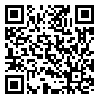Volume 24, Issue 2 (Summer 2023)
jrehab 2023, 24(2): 212-233 |
Back to browse issues page
Download citation:
BibTeX | RIS | EndNote | Medlars | ProCite | Reference Manager | RefWorks
Send citation to:



BibTeX | RIS | EndNote | Medlars | ProCite | Reference Manager | RefWorks
Send citation to:
Rohani Ravari M H, Ebadi A, Darouie A. Facilitators and Barriers to Stuttering Telepractice in Preschool Children: A Qualitative Study. jrehab 2023; 24 (2) :212-233
URL: http://rehabilitationj.uswr.ac.ir/article-1-3197-en.html
URL: http://rehabilitationj.uswr.ac.ir/article-1-3197-en.html
1- Department of Speech Therapy, School of Rehabilitation Sciences, University of Social Welfare and Rehabilitation Sciences, Tehran, Iran.
2- Behavioral Sciences Research Center, Life Style Institute, Nursing Faculty, Baqiyatallah University of Medical Sciences, Tehran, Iran.
3- Department of Speech Therapy, School of Rehabilitation Sciences, University of Social Welfare and Rehabilitation Sciences, Tehran, Iran. ,adarouie@hotmail.com
2- Behavioral Sciences Research Center, Life Style Institute, Nursing Faculty, Baqiyatallah University of Medical Sciences, Tehran, Iran.
3- Department of Speech Therapy, School of Rehabilitation Sciences, University of Social Welfare and Rehabilitation Sciences, Tehran, Iran. ,
Abstract: (2326 Views)
Objective With the advancement of information and communication technology, the use of telepractice has expanded to provide speech, language, and swallowing services. In different countries, studies have been conducted in the field of telepractice of speech, language, and swallowing disorders, including stuttering, and these studies have confirmed the effectiveness of this method of providing treatment and have mentioned some problems. To present this method of treatment more effectively, the challenges of this treatment should be examined. The present study has been conducted to investigate the facilitators and barriers to the telepractice of stuttering in preschool children.
Materials & Methods In this qualitative study, individual unstructured interviews have conducted using qualitative content analysis with 11 participants, including therapists with experience in stuttering telepractice in preschool children, therapists who were opposed to this treatment (n=7 people) as well as parents who have had successful telepractice and parents who have had unsuccessful telepractice (n=4).
Results Telepractice facilitators included cost reduction, therapist-client communication between sessions, greater parental cooperation and responsibility in telepractice, reduced stress and increased child-therapist collaboration in the natural environment, more time freedom, and time flexibility for the family and therapist. Barriers to telepractice in this group included lower trust in the therapist in telepractice, limited communication cues, spending more energy by the therapist, difficulty in educating parents, and lack of comprehensive protocols in telepractice.
Conclusion When these cases are recognized, it is possible to provide higher-quality treatment to people who need these services by reducing barriers and strengthening facilitators. To achieve this goal, it is necessary to conduct studies to develop comprehensive and detailed protocols for providing this method of treatment, taking into account the existing facilitators and obstacles.
Corresponding author: Akbar Darouie, E-mail:adarouie@hotmail.com
You can also search for this author in: PubMed, Google Scholar
Materials & Methods In this qualitative study, individual unstructured interviews have conducted using qualitative content analysis with 11 participants, including therapists with experience in stuttering telepractice in preschool children, therapists who were opposed to this treatment (n=7 people) as well as parents who have had successful telepractice and parents who have had unsuccessful telepractice (n=4).
Results Telepractice facilitators included cost reduction, therapist-client communication between sessions, greater parental cooperation and responsibility in telepractice, reduced stress and increased child-therapist collaboration in the natural environment, more time freedom, and time flexibility for the family and therapist. Barriers to telepractice in this group included lower trust in the therapist in telepractice, limited communication cues, spending more energy by the therapist, difficulty in educating parents, and lack of comprehensive protocols in telepractice.
Conclusion When these cases are recognized, it is possible to provide higher-quality treatment to people who need these services by reducing barriers and strengthening facilitators. To achieve this goal, it is necessary to conduct studies to develop comprehensive and detailed protocols for providing this method of treatment, taking into account the existing facilitators and obstacles.
Corresponding author: Akbar Darouie, E-mail:adarouie@hotmail.com
You can also search for this author in: PubMed, Google Scholar
Type of Study: Original |
Subject:
Speech & Language Pathology
Received: 6/10/2022 | Accepted: 9/01/2023 | Published: 1/07/2023
Received: 6/10/2022 | Accepted: 9/01/2023 | Published: 1/07/2023
Send email to the article author
| Rights and permissions | |
 |
This work is licensed under a Creative Commons Attribution-NonCommercial 4.0 International License. |








